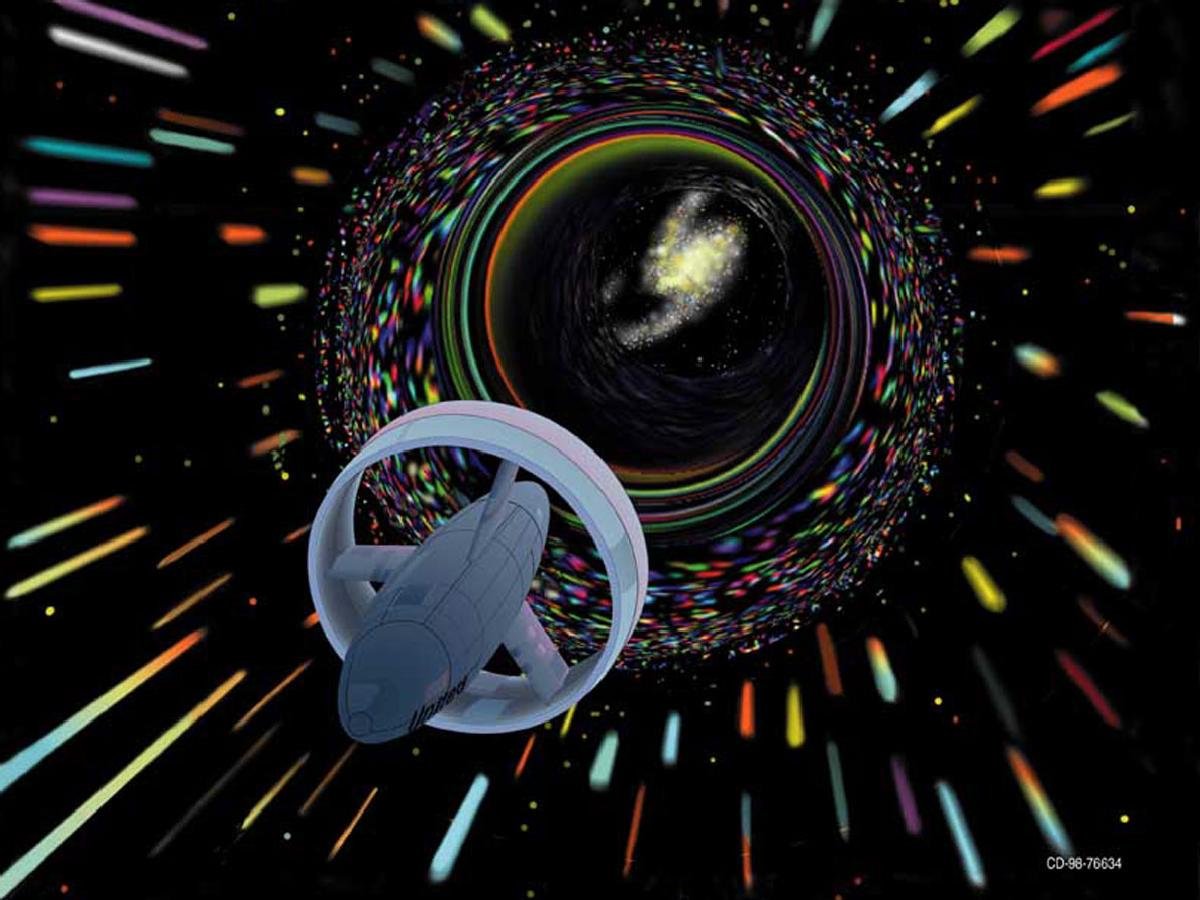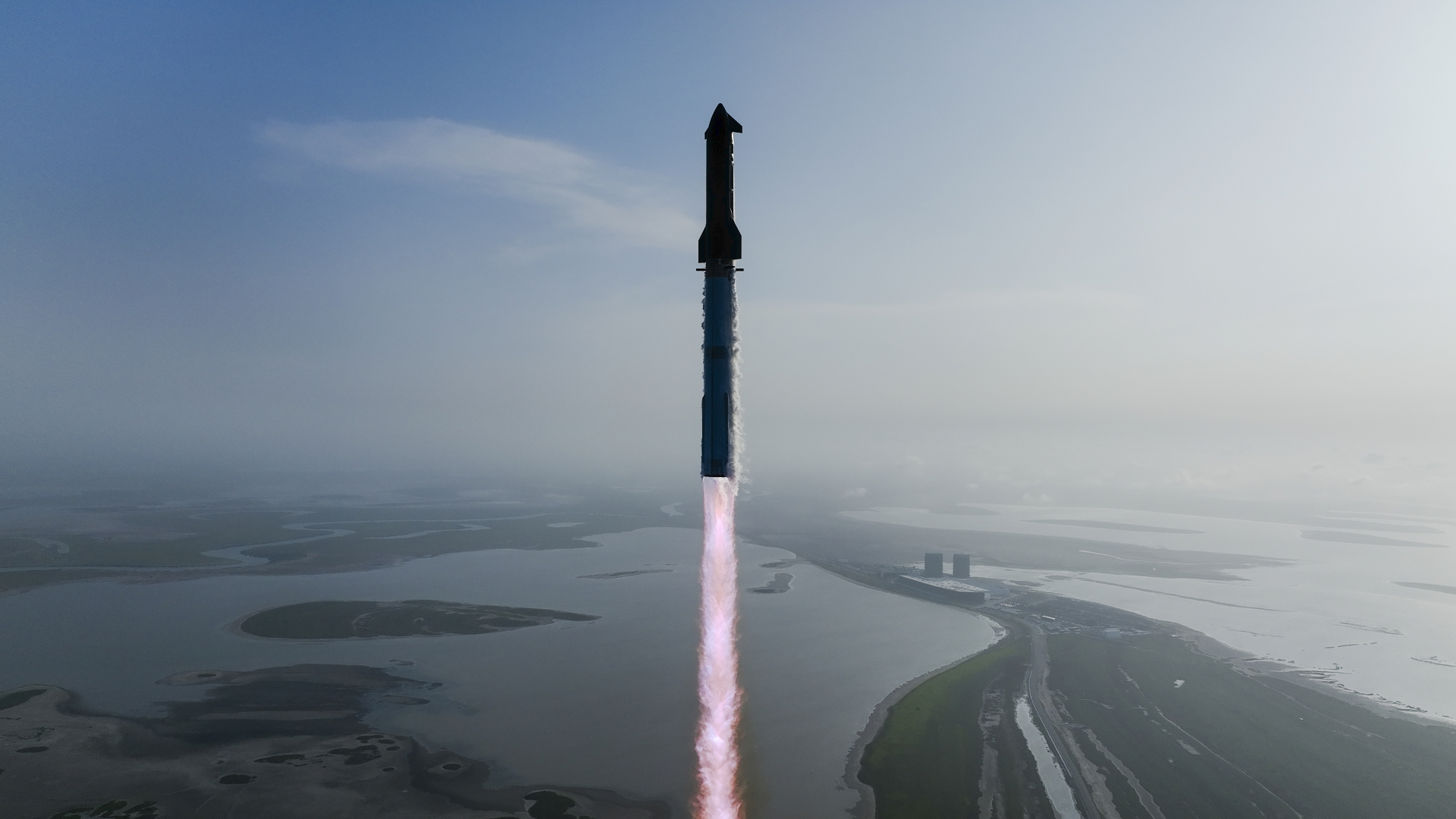No Warp Drive Here: NASA Downplays 'Impossible' EM Drive Space Engine

Despite the fevered reports rocketing around the Internet recently, NASA is not on the verge of developing a fuel-free, faster-than-light propulsion system, space agency officials stress.
A team based at NASA's Johnson Space Center (JSC) in Houston reportedly tested a prototype engine system in a vacuum recently and determined that it produced a small amount of thrust. This news was disclosed on a NASASpaceflight.com forum earlier this year, and last week, it hit the broader Internet with a vengeance, as some pieces linked the technology to a long-sought "warp drive."
Why all the attention? The novel thruster system is based on the EmDrive, a British invention said to create thrust without propellant by bouncing microwaves around inside a chamber. If it works, the engine could revolutionize spaceflight — and it would apparently violate the laws of physics, as well. [Superfast Spacecraft Propulsion Concepts (Images)]
But NASA is downplaying the research and its potential to deliver a huge propulsion breakthrough in the near future.
"While conceptual research into novel propulsion methods by a team at NASA's Johnson Space Center in Houston has created headlines, this is a small effort that has not yet shown any tangible results," NASA officials told Space.com in a statement. "NASA is not working on 'warp drive' technology."
Not much information
The novel space engine design would seem to produce more energy than is put into it, violating the law of conservation of energy, which (simply put) says that energy cannot be destroyed or created.
"The reason it's controversial is, it violates Newton's Third Law," Brian Koberlein, an astrophysicist who studies general relativity and computational astrophysics, told Space.com.
Breaking space news, the latest updates on rocket launches, skywatching events and more!
It's possible that electromagnetic leaks in the chamber or coupling with Earth's magnetic field are responsible for the supposedly impossible result, said Koberlein, who is based at the Rochester Institute of Technology. But the recent test in the vacuum chamber, if it is indeed valid, does rule out another prosaic explanation — that the engine was pushing against Earth's atmosphere in some way, he added.
Outside scientists are understandably eager to know just what the JSC Eagleworks team has managed to achieve, and how they did it. But observers can't perform such an evaluation at the moment, because the work hasn't been submitted for peer review, said Koberlein.
Indeed, all that outside researchers really have to go on is the NASASpaceflight.com forum, which includes a thread of posts stretching back several years, discussing the development of the EmDrive. (Paul March, an engineer on the Eagleworks team doing the work, contributed to the discussion on the forum. When contacted by Space.com, he referred queries to his boss, JSC engineer Harold "Sonny" White, who did not respond to requests for an interview.)
It's unclear from these forum posts if the prototype propulsion system actually generated any thrust during the recent tests, said Ethan Siegel, a physics and astronomy professor at Lewis & Clark College in Portland, Oregon. Siegel also wrote about the EmDrive in Forbes Magazine, to which he regularly contributes.
Siegel said he is seeing claims of thrust happening just a few times over many tests, with a frequency that is "not inconsistent with random chance." Further, the thrust that was produced in these rare instances was apparently just above the margin of error for measurement, he added. [Gallery: Visions of Interstellar Starship Travel]
"It's tens of micronewtons, less than the weight of a snowflake," Siegel told Space.com. Specifically, Siegel said he is seeing reports of anywhere between 50 and 70 micronewtons. The error bar of measurement, however, is reported as between 15 and 30 micronewtons.
"You want a signal that's way, way bigger than errors you can measure," he said.
Looking for breakthroughs
Siegel said he hopes the NASA Eagleworks team members continue their research into the drive's development.
"It's to make sure we give this the third-degree treatment and scrutinize it as much as we can," he said. "We do not want false hope for a miracle device that is never going to happen. Before we believe this, let's do all of the robust tests, look at all the criteria and make sure we're not fooling ourselves."
Koberlein emphasized that part of NASA's mandate is to fund research that follows interesting leads, but that may not necessarily end up producing a working prototype.
"Because NASA is a government research organization," he told Space.com, the agency is "like venture capitalists. They are developing tried and true technologies … but they will also put money into things that are extremely blue-sky."
Some NASA research does indeed attempt to make big, game-changing breakthroughs, agency officials wrote in their statement to Space.com.
"The agency does fund very fundamental research as part of our advanced concepts and innovative investments that push the frontiers of science and engineering," they wrote. "This is part of what NASA does in exploring the unknown, and the agency is committed to and focused on the priorities and investments identified by the NASA Strategic Space Technology Investment Plan.Through these investments, NASA will develop the capabilities necessary to send humans further into space than ever before."
Follow Elizabeth Howell @howellspace, or Space.com @Spacedotcom. We're also on Facebook and Google+. Originally published on Space.com.
Join our Space Forums to keep talking space on the latest missions, night sky and more! And if you have a news tip, correction or comment, let us know at: community@space.com.

Elizabeth Howell (she/her), Ph.D., was a staff writer in the spaceflight channel between 2022 and 2024 specializing in Canadian space news. She was contributing writer for Space.com for 10 years from 2012 to 2024. Elizabeth's reporting includes multiple exclusives with the White House, leading world coverage about a lost-and-found space tomato on the International Space Station, witnessing five human spaceflight launches on two continents, flying parabolic, working inside a spacesuit, and participating in a simulated Mars mission. Her latest book, "Why Am I Taller?" (ECW Press, 2022) is co-written with astronaut Dave Williams.
